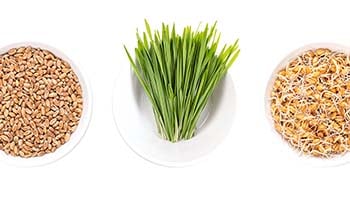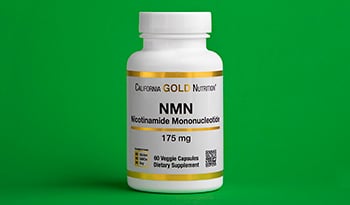Top 6 Natural Approaches to Aging: Defining Senolytic Supplements + More
DISCLAIMER:This blog does not intend to provide diagnosis...
- In this article:
- What Are Senolytic Supplements?
- 1. Fisetin
- 2. Apigenin
- 3. Quercetin
- 4. Curcumin
- 5. Milk Thistle
- 6.Epigallo-Catechin-Gallate (EGCG)
- Takeaway

With an increase in quality health care, a growing desire for optimal health, and an interest in overall wellness, the average age of the world’s population continues to rise. The World Health Organization (WHO) estimates that the number of people worldwide over the age of 60 will double by the year 2050.
While living at an older age has many benefits, the number of chronic age-related diseases has also risen. This increase in longevity is leading many individuals to seek out ways to support the aging process healthily.
This search for a healthier way to age has led to a rise in the popularity of senolytic supplements. What are senolytic supplements? Do they support a healthy aging process? If so, how?
What Are Senolytic Supplements?
Meaning “old destroying,” the term senolytic has recently been attributed to a class of compounds that help support a healthy aging process. Therefore, senolytic supplements are nutrient-rich substances usually used to counter or prevent age-related illness and disease.
Research involving mice indicates that senolytic supplements may also help to extend lifespan as well.
When looking at how senolytics work, most studies suggest that senolytic supplements work in a variety of ways. One of the main ways that senolytic supplements work is to target senescent cells. Senescent cells are old or aging cells that no longer function properly in the body.
Cells may become senescent or old by way of cellular damage, cancer-promoting genes, damage to the deoxyribonucleic acid (DNA), or telomere shortening.
As the body ages, senescent cells may gather together in the body. These cells then stop multiplying, but they also resist apoptosis. Apoptosis is a natural phenomenon where old cells are programmed to die so that new cells may replace them.
When senescent or “zombie” cells refuse to die, they may secrete harmful proteins that cause an increase in inflammation, tissue damage, chronic illness, and disease. Some research attributes a wide variety of diseases to an accumulation of senescent cells. Illnesses like cardiovascular disease, metabolic dysfunction, kidney disease, cancers, and even frailty associated with old age have been linked to senescent “zombie” cells. Studies indicate that senolytic supplements may help to decrease senescent cells.
Here are 6 senolytic supplements to bolster healthy aging.
1. Fisetin
When it comes to senolytics, fisetin is one of the biggest heavy hitters. Fisetin is a flavonoid, a naturally occurring molecule that can be found in many different fruits and vegetables.
Some foods high in fisetin include strawberries, apples, tomatoes, and cucumbers.
Research indicates that fisetin may have powerful senolytic activity.
One test-tube study used human adipose or fatty tissue to test the effectiveness of fisetin as a senolytic. The study found that fisetin was able to destroy the zombie-like senescent cells in the human fatty tissue, which led to a reduction of senescent cells overall.
The study went on to test the effectiveness of fisetin in aged mice. The study concluded that supplementation with fisetin was able to extend the lifespan of the mice while bringing organs back into internal balance and reducing age-related illnesses.
Studies suggest that fisetin also acts as an anti-inflammatory agent. One test-tube study found that fisetin stopped the secretion of inflammatory cytokines or cell messengers.
With the potential to aid in decreasing zombie cells along with potent anti-inflammatory properties, fisetin may be a powerhouse when it comes to supporting healthy aging.
2. Apigenin
Apigenin, like fisetin, is a flavonoid found naturally in foods like parsley, celery, artichokes, and chamomile.
Research suggests that apigenin may be a powerful senolytic supplement. One test-tube study found apigenin was able to stop senescent cells from secreting harmful proteins.
The harmful proteins that senescent cells secrete may not only contribute to an increase in inflammation. Studies suggest that the proteins secreted by senescent cells may convert healthy cells into zombie cells.
Studies suggest that apigenin is also a powerful anti-oxidant by aiding the body in producing more glutathione.
Glutathione is often considered to be the body’s master antioxidant. Glutathione plays an essential role in protecting cells from oxidative stress. It also helps to protect the cells from toxicity that may arise from foreign substances like medications.
As the body ages, less glutathione is produced, leading to a potential increase in oxidative stress.
3. Quercetin
Quercetin is another heavy hitter when it comes to acting as a senolytic supplement. Quercetin is a naturally occurring flavonoid, much like fisetin and apigenin. Some foods that contain quercetin include onions, broccoli, apples, and cherries.
One open-label phase I pilot study involving quercetin and a pharmaceutical drug followed 9 participants who were diagnosed with kidney disease due to diabetes.
These 9 participants included both males and females and ranged in age from 68 to 71. The study gave the individuals quercetin and a pharmaceutical dasatinib for 3 days and measured the amount of senescent cells in fatty tissues before and after an 11-day interval.
The study found that the quercetin and pharmaceutical combination drastically reduced the number of senescent cells in the fatty tissue. The study also found that the quercetin and pharmaceutical combination acted as an anti-inflammatory agent by reducing the secretion of inflammatory cell messengers.
One review noted that quercetin supplementation may also be protective for the heart by preventing age-related heart failure.
4. Curcumin
Curcumin is the main biologically active compound in the golden spice turmeric. Recent studies have shown that curcumin may have a wide variety of health-promoting properties.
Studies are beginning to suggest that curcumin may also be an incredible senolytic. Animal studies have found that curcumin displays anti-oxidant capabilities that may contribute to an increase in life span.
One animal study found that curcumin supplementation was associated with an increase in the average life span of Wistar rats by almost 40%.
Another animal study involving the roundworm Caenorhabditis elegans found that curcumin supplementation increased the maximum lifespan by over 20%. C. elegans usually lives from 12 to 18 days. The study showed that the curcumin supplement was able to extend the lifespan of the roundworms by over 3 days.
Research suggests that curcumin may increase lifespan by increasing the activity of an enzyme that supports healthy telomere lengths. Telomeres are the ends of DNA. They become shorter with age.
Shortened telomere length has been associated with an increase in age-related diseases and a shorter lifespan.
5. Milk Thistle
Silybum marianum, commonly known as milk thistle, is showing promising results as a powerful senolytic supplement. Milk thistle is an herb that is closely related to the daisy family. Native to the Mediterranean, milk thistle is now used all over the world.
This exceptional herb is often used to support liver and gallbladder health but studies suggest that it may also act as a senolytic supplement. One test-tube study involved introducing a milk thistle extract to human skin cells that had become senescent.
The study noted that the senescent skin cells stopped the growth and proliferation of younger skin cells. The senescent cells also caused normal skin cells to enter into a zombie-like state.
The study found that an extract of milk thistle was able to eliminate the senescent skin cells and increase the proliferation of younger skin cells. The study concluded that milk thistle may have been able to rejuvenate skin cells and prevent premature aging.
In addition to its potential senolytic properties, studies indicate that milk thistle may also be an impressive antioxidant that exhibits a wide variety of benefits, from supporting metabolism to helping maintain a healthy blood pressure.
6.Epigallo-Catechin-Gallate (EGCG)
Epigallo-Catechin-Gallate, also known as EGCG, may help bolster a healthy aging process.
EGCG is a flavonoid that is commonly found in green tea. It has been linked with optional health in different medicinal traditions for centuries. Research indicates that EGCG may possess some senolytic activity. One test-tube study found that EGCG helped to improve mitochondrial dysfunction by promoting new mitochondrial growth.
The mitochondria are the powerhouse of the cell. They produce the energy needed for the body to function.
With aging, mitochondrial function tends to decline leading to less energy and more frailty.
Studies show that EGCG may also bolster healthy aging by acting as an antioxidant. One test-tube study found that EGCG was able to increase the synthesis of longevity-promoting proteins by reducing oxidative stress.
EGCG may also possess powerful anti-inflammatory and anti-tumor properties as well.
Takeaway
Senolytic supplements are incredible molecules that may help promote a healthy aging process by destroying zombie cells in the body. Studies suggest that many natural senolytics may also exhibit other amazing properties like acting as an anti-inflammatory or an anti-oxidant.
Adding senolytic supplements to a routine focused on healthy aging may promote longevity and optimal wellness for many years to come.
References:
- Steverson M. Ageing and health. World Health Organization. October 1, 2022. Accessed September 28, 2023. https://www.who.int/news-room/fact-sheets/detail/ageing-and-health.
- Kirkland JL, Tchkonia T. Senolytic drugs: from discovery to translation. J Intern Med. 2020;288(5):518-536. doi:10.1111/joim.13141
- Raffaele M, Vinciguerra M. The costs and benefits of senotherapeutics for human health. The Lancet Healthy Longevity. 2022;3(1). doi:10.1016/s2666-7568(21)00300-7
- Pal HC, Pearlman RL, Afaq F. Fisetin and Its Role in Chronic Diseases. Adv Exp Med Biol. 2016;928:213-244. doi:10.1007/978-3-319-41334-1_10
- Yousefzadeh MJ, Zhu Y, McGowan SJ, et al. Fisetin is a senotherapeutic that extends health and lifespan. EBioMedicine. 2018;36:18-28. doi:10.1016/j.ebiom.2018.09.015
- LaTonya J. Hickson, Larissa G.P. Langhi Prata, Shane A. Bobart, Tamara K. Evans, Nino Giorgadze, Shahrukh K. Hashmi, Sandra M. Herrmann, Michael D. Jensen, Qingyi Jia, Kyra L. Jordan, Todd A. Kellogg, Sundeep Khosla, Daniel M. Koerber, Anthony B. Lagnado, Donna K. Lawson, Nathan K. LeBrasseur, Lilach O. Lerman, Kathleen M. McDonald, Travis J. McKenzie, João F. Passos, Robert J. Pignolo, Tamar Pirtskhalava, Ishran M. Saadiq, Kalli K. Schaefer, Stephen C. Textor, Stella G. Victorelli, Tammie L. Volkman, Ailing Xue, Mark A. Wentworth, Erin O. Wissler Gerdes, Yi Zhu, Tamara Tchkonia, James L. Kirkland,Senolytics decrease senescent cells in humans: Preliminary report from a clinical trial of Dasatinib plus Quercetin in individuals with diabetic kidney disease,EBioMedicine, Volume 47, 2019, Pages 446-456, ISSN 2352-3964, https://doi.org/10.1016/j.ebiom.2019.08.069. (https://www.sciencedirect.com/science/article/pii/S2352396419305912)
- Sun Y, Qin H, Zhang H, et al. Fisetin inhibits inflammation and induces autophagy by mediating PI3K/AKT/mTOR signaling in LPS-induced RAW264.7 cells. Food Nutr Res. 2021;65:10.29219/fnr.v65.6355. Published 2021 Mar 25. doi:10.29219/fnr.v65.6355
- Shankar E, Goel A, Gupta K, Gupta S. Plant flavone apigenin: An emerging anticancer agent. Curr Pharmacol Rep. 2017;3(6):423-446. doi:10.1007/s40495-017-0113-2
- Perrott KM, Wiley CD, Desprez PY, Campisi J. Apigenin suppresses the senescence-associated secretory phenotype and paracrine effects on breast cancer cells. Geroscience. 2017;39(2):161-173. doi:10.1007/s11357-017-9970-1
- Chistiakov DA, Sobenin IA, Revin VV, Orekhov AN, Bobryshev YV. Mitochondrial aging and age-related dysfunction of mitochondria. Biomed Res Int. 2014;2014:238463. doi:10.1155/2014/238463
- Deledda A, Giordano E, Velluzzi F, et al. Mitochondrial Aging and Senolytic Natural Products with Protective Potential. Int J Mol Sci. 2022;23(24):16219. Published 2022 Dec 19. doi:10.3390/ijms232416219
- Forman HJ, Zhang H, Rinna A. Glutathione: overview of its protective roles, measurement, and biosynthesis. Mol Aspects Med. 2009;30(1-2):1-12. doi:10.1016/j.mam.2008.08.006
- Hickson LJ, Langhi Prata LGP, Bobart SA, et al. Senolytics decrease senescent cells in humans: Preliminary report from a clinical trial of Dasatinib plus Quercetin in individuals with diabetic kidney disease [published correction appears in EBioMedicine. 2020 Feb;52:102595]. EBioMedicine. 2019;47:446-456. doi:10.1016/j.ebiom.2019.08.069
- Kirkland JL, Tchkonia T. Senolytic drugs: from discovery to translation. J Intern Med. 2020;288(5):518-536. doi:10.1111/joim.13141
- LaTonya J. Hickson, Larissa G.P. Langhi Prata, et al. Senolytics decrease senescent cells in humans: Preliminary report from a clinical trial of Dasatinib plus Quercetin in individuals with diabetic kidney disease,EBioMedicine, Volume 47, 2019, Pages 446-456, ISSN 2352-3964, https://doi.org/10.1016/j.ebiom.2019.08.069. (https://www.sciencedirect.com/science/article/pii/S2352396419305912)
- Pal HC, Pearlman RL, Afaq F. Fisetin and Its Role in Chronic Diseases. Adv Exp Med Biol. 2016;928:213-244. doi:10.1007/978-3-319-41334-1_10
- Pan MH, Wu JC, Ho CT, Badmaev V. Effects of water extract of Curcuma longa (L.) roots on immunity and telomerase function. J Complement Integr Med. 2017;14(3):/j/jcim.2017.14.issue-3/jcim-2015-0107/jcim-2015-0107.xml. Published 2017 May 12. doi:10.1515/jcim-2015-0107
- Paredes-Gonzalez X., Fuentes F., Jeffery S., Saw C.L.L., Shu L., Su Z.Y., Kong A.N.T. Induction of NRF2-mediated gene expression by dietary phytochemical flavones apigenin and luteolin. Biopharm. Drug Dispos. 2015;36:440–451. doi: 10.1002/bdd.1956.
- Perrott KM, Wiley CD, Desprez PY, Campisi J. Apigenin suppresses the senescence-associated secretory phenotype and paracrine effects on breast cancer cells. Geroscience. 2017;39(2):161-173. doi:10.1007/s11357-017-9970-1
- Raffaele M, Vinciguerra M. The costs and benefits of senotherapeutics for human health. The Lancet Healthy Longevity. 2022;3(1). doi:10.1016/s2666-7568(21)00300-7
- Shammas MA. Telomeres, lifestyle, cancer, and aging. Curr Opin Clin Nutr Metab Care. 2011;14(1):28-34. doi:10.1097/MCO.0b013e32834121b1
- Shankar E, Goel A, Gupta K, Gupta S. Plant flavone apigenin: An emerging anticancer agent. Curr Pharmacol Rep. 2017;3(6):423-446. doi:10.1007/s40495-017-0113-2
- Steverson M. Ageing and health. World Health Organization. October 1, 2022. Accessed September 28, 2023. https://www.who.int/news-room/fact-sheets/detail/ageing-and-health.
- Sun Y, Qin H, Zhang H, et al. Fisetin inhibits inflammation and induces autophagy by mediating PI3K/AKT/mTOR signaling in LPS-induced RAW264.7 cells. Food Nutr Res. 2021;65:10.29219/fnr.v65.6355. Published 2021 Mar 25. doi:10.29219/fnr.v65.6355
- Tajmohammadi A, Razavi BM, Hosseinzadeh H. Silybum marianum (milk thistle) and its main constituent, silymarin, as a potential therapeutic plant in metabolic syndrome: A review. Phytother Res. 2018;32(10):1933-1949. doi:10.1002/ptr.6153
- Woo J, Shin S, Cho E, et al. Senotherapeutic-like effect of Silybum marianum flower extract revealed on human skin cells. PLoS One. 2021;16(12):e0260545. Published 2021 Dec 16. doi:10.1371/journal.pone.0260545
- Xiong L.G., Chen Y.J., Tong J.W., Gong Y.S., Huang J.A., Liu Z.H. Epigallocatechin-3-Gallate Promotes Healthy Lifespan through Mitohormesis during Early-to-Mid Adulthood in Caenorhabditis Elegans. Redox Biol. 2018;14:305–315. doi: 10.1016/j.redox.2017.09.019
- Yousefzadeh MJ, Zhu Y, McGowan SJ, et al. Fisetin is a senotherapeutic that extends health and lifespan. EBioMedicine. 2018;36:18-28. doi:10.1016/j.ebiom.2018.09.015
- Zia A, Farkhondeh T, Pourbagher-Shahri AM, Samarghandian S. The role of curcumin in aging and senescence: Molecular mechanisms. Biomed Pharmacother. 2021;134:111119. doi:10.1016/j.biopha.2020.111119

 By Dr. Candace Mathers, N.D.
By Dr. Candace Mathers, N.D.


